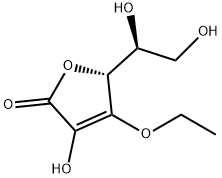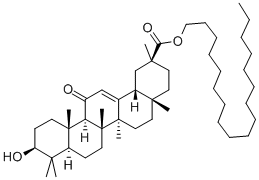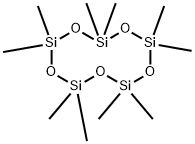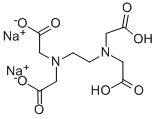Ascorbyl Tetraisopalmitate
- CAS NO.:183476-82-6
- Empirical Formula: C70H128O10
- Molecular Weight: 1129.76
- MDL number: MFCD06200750
- EINECS: 430-110-8
- SAFETY DATA SHEET (SDS)
- Update Date: 2024-11-13 18:13:23

What is Ascorbyl Tetraisopalmitate?
Chemical properties
1. Excellent transdermal absorption;
2. Inhibit intracellular tyrosinase activity and melanin production;
3. Reduce cell/DNA damage caused by UV (anti-UV/anti-stress);
4. Prevent lipid peroxidation and skin aging (anti-oxidation);
5. Good solubility in common cosmetic oils;
6. SOD-like activity (antioxidant);
7. Collagen synthesis and collagen protection (anti-aging);
8. Stable to heat and oxidation.
Physical properties
An oil-soluble vitamin C derivative with antioxidant, melanin inhibition and whitening properties. Similar to VC, it is easily absorbed by the skin, and the absorption rate is 16.5 times that of water-soluble vitamin C.
The Uses of Ascorbyl Tetraisopalmitate
Ascorbyl tetraisopalmitate (CAS# 183476-82-6) is a derivative of L-ascorbic acid (A786990) and is found in topicals and cosmetics as a skin hydrating component. Its inclusion in cosmetics is due to its increased stability compared to its parent form.
Chemical Reactivity
Ascorbyl Tetraisopalmitate play a role in cosmetic, including skin lightening, promotion of collagen synthesis, and inhibition of lipid peroxidation. As a derivative of vitamin C, it is stable at high temperatures and has excellent skin absorption. Ascorbyl Tetraisopalmitate can be decomposed into free vitamin C in the skin to achieve physiological functions.
Properties of Ascorbyl Tetraisopalmitate
| Boiling point: | 947.4±64.0 °C(Predicted) |
| alpha | [α]D20-25~-30° |
| Density | 0.928~0.941g/mL (20℃) |
| vapor pressure | 0Pa at 20℃ |
| solubility | DMF: 2 mg/ml; DMSO: insol; Ethanol: 10 mg/ml; PBS (pH 7.2): insol |
| form | A neat liquid |
Safety information for Ascorbyl Tetraisopalmitate
| Signal word | Warning |
| Pictogram(s) |
 Exclamation Mark Irritant GHS07 |
| GHS Hazard Statements |
H315:Skin corrosion/irritation H319:Serious eye damage/eye irritation |
| Precautionary Statement Codes |
P264:Wash hands thoroughly after handling. P264:Wash skin thouroughly after handling. P280:Wear protective gloves/protective clothing/eye protection/face protection. P302+P352:IF ON SKIN: wash with plenty of soap and water. P305+P351+P338:IF IN EYES: Rinse cautiously with water for several minutes. Remove contact lenses, if present and easy to do. Continuerinsing. P332+P313:IF SKIN irritation occurs: Get medical advice/attention. P337+P313:IF eye irritation persists: Get medical advice/attention. |
Computed Descriptors for Ascorbyl Tetraisopalmitate
New Products
4-Fluorophenylacetic acid 4-Methylphenylacetic acid N-Boc-D-alaninol N-BOC-D/L-ALANINOL Tert-butyl bis(2-chloroethyl)carbamate 3-Morpholino-1-(4-nitrophenyl)-5,6-dihydropyridin- 2(1H)-one Furan-2,5-Dicarboxylic Acid Tropic acid S-2-CHLORO PROPIONIC ACID ETHYL ISOCYANOACETATE 2-Bromo-1,3-Bis(Dimethylamino)Trimethinium Hexafluorophosphate (6-METHYL-[1,3]DITHIOLO[4,5-b]QUINOXALIN-2-ONE INDAZOLE-3-CARBOXYLIC ACID 4-IODO BENZOIC ACID (2-Hydroxyphenyl)acetonitrile 4-Bromopyrazole 5,6-Dimethoxyindanone 2-(Cyanocyclohexyl)acetic acid 4-methoxy-3,5-dinitropyridine 2-aminopropyl benzoate hydrochloride 1-(4-(aminomethyl)benzyl)urea hydrochloride diethyl 2-(2-((tertbutoxycarbonyl)amino) ethyl)malonate tert-butyl 4- (ureidomethyl)benzylcarbamate Ethyl-2-chloro((4-methoxyphenyl)hydrazono)acetateRelated products of tetrahydrofuran







![ALPHA-DELTA-UA-[1->3]-GLCNAC SODIUM SALT](https://img.chemicalbook.in/CAS/20211123/GIF/149368-06-9.gif)
You may like
-
 2033-24-1 98%View Details
2033-24-1 98%View Details
2033-24-1 -
 42831-50-5 5-METHYLISOXAZOLE-4-CARBOXYLIC ACID 98%View Details
42831-50-5 5-METHYLISOXAZOLE-4-CARBOXYLIC ACID 98%View Details
42831-50-5 -
 1975-50-4 98%View Details
1975-50-4 98%View Details
1975-50-4 -
 2-HYDROXY BENZYL ALCOHOL 98%View Details
2-HYDROXY BENZYL ALCOHOL 98%View Details
90-01-7 -
 2-Chloro-1,3-Bis(Dimethylamino)Trimethinium Hexafluorophosphate 221615-75-4 98%View Details
2-Chloro-1,3-Bis(Dimethylamino)Trimethinium Hexafluorophosphate 221615-75-4 98%View Details
221615-75-4 -
 61397-56-6 CIS BROMO BENZOATE 98%View Details
61397-56-6 CIS BROMO BENZOATE 98%View Details
61397-56-6 -
 14714-50-2 (2-Hydroxyphenyl)acetonitrile 98+View Details
14714-50-2 (2-Hydroxyphenyl)acetonitrile 98+View Details
14714-50-2 -
 118753-70-1 98+View Details
118753-70-1 98+View Details
118753-70-1